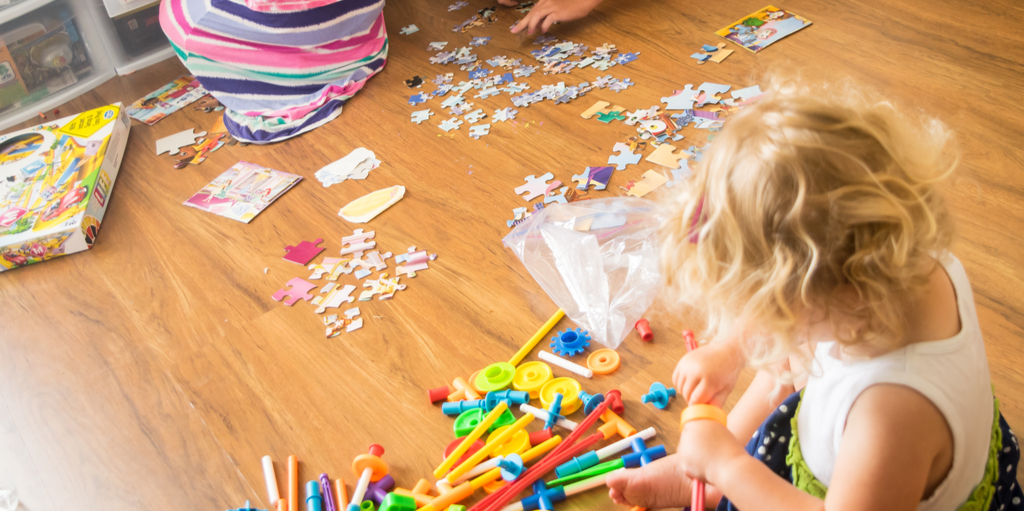The response on American campuses to Hamas' brutality might prompt donors to seek reform. But what is the way forward?
Education in Crisis
Just like that, we’re all homeschoolers. Last week began quite normally, with universities and k-12 schools operating as usual. A week later, the doors were locked and the desks had been cleared. From their bedrooms, professors cursed at their terminals as they tried to decipher the instructions sent from the IT office. Parents flocked to homeschool websites, and dug deep in their memories too, trying to remember the difference between the stratosphere and the troposphere. What language is “sohcahtoa,” again?
Jeff Bezos and Mark Zuckerberg sat astride the new world, suddenly indispensable to all of their former critics. Did we say we wanted our kids to get less screen time? Never mind.
The Virtual Classroom Arrives
For obvious reasons, the coronavirus pandemic has generated a great deal of discussion about the deficiencies of our health care system. Education is less pressing for now, and we’ve mostly limited ourselves to cracking jokes about Common Core and the number of kids suddenly learning to “carry the one.” Over the long run, though, there will surely be consequences to such massive disruption in our educational status quo.
COVID-19 has forced us into an interesting social experiment. Almost overnight, we suddenly have a compelling reason to do as much as possible from our homes. That generally means minimizing human contact by maximizing our use of virtual resources. It’s unclear how long the crisis will last, but many universities have already declared their intention to stay online for the rest of the semester. A few state governors have already indicated that even k-12 schools may remain closed until next fall. We’re about to see what life would be like without brick-and-mortar educational institutions.
How might public perspective shift, in the wake of this full-immersion virtual experiment? Already over the past quarter-century, the dramatic expansion of the virtual realm represented a pivotal change to human society. Coronavirus hit us at an interesting moment: almost everyone at this point has some form of access to the virtual realm, and is at least nominally familiar with social media, YouTube, and Wikipedia. Still, inertia and social custom have preserved many of the older institutions, long past the point where the technophiles regarded them as obsolete. It’s been interesting over the past two decades to see which organizations have cratered, and which have managed to survive. Borders went out of business, but we still value our public libraries. Blockbuster is history, but movie theaters continue to thrive. Schools and universities have more staying power than places of entertainment, having long been pillars of civil society. As coronavirus sweeps the nation though, their moment of truth may have arrived.
Education in the Dock
For some years now, educational reform has been the dog that refuses to bark. This is especially true of our university system. On the right especially, people have long been speculating about the collapse of the Academy. In 2012, for instance, author Nathan Harden generated some buzz among the professoriate when he wrote a piece for The American Interest predicting that online education would push most colleges into bankruptcy within the next decade. Higher Ed has indeed beencontracting year by year, but, with two years to go on Harden’s clock, his predictions now look overdrawn.
Harden’s argument was compelling in many ways. College was outrageously expensive, and research increasingly showed that students were learning surprisingly little. The culture of university campuses was mostly one of dissolute debauchery. Nevertheless, the party has gone on awhile, largely because the undergraduate experience still represents a rite of passage and a recognized phase of life for a large share of Americans. It’s difficult to command steady earning power in a modern economy without a significant amount of education, and given our particular cultural heritage, it seems natural to combine that education with a coming-of-age experience that is meant to transition adolescents into adulthood. For all his prescient points, Harden seems to have underestimated the power of cultural inertia to preserve inefficient institutions.
Now, out of the blue, China has thrown a wrench in everyone’s works. Inertia counts for a lot less today than it did a month ago. At all levels of society, people are scrambling to find new ways of accomplishing the most important tasks. If the epidemic ends relatively quickly, inertia may pull us back to the old routines. As quarantines drag on though, we’ll inevitably find ourselves thinking further and further outside the box. What are the most important components of a good education? What do we truly value about physical proximity to other humans?
One thing at least we can say already. Institutional learning is not at all necessary for communicating information. High-quality asynchronous instruction (books, lectures, and other resources that can be used at the student’s convenience) has been available for some time now, through YouTube, informative television programs, or virtual instruction services like The Great Courses. In our day, people at all income levels can learn almost anything, provided it can be taught through a book or video. Synchronous learning (involving interaction between instructors and students) is somewhat more challenging to coordinate, but even this has become fairly manageable. Even as you read this, professors are taking questions from students in online seminars, watching their reactions in tiny face-sized boxes. This virtual hack may not fully capture the classroom experience, but the divide is a step, not a chasm.
The Value of Presence
The reality, though, is that institutions can be much more than just information delivery mechanisms. Instructors and learners still have many reasons to gather together in one place. For one thing, there are some forms of instruction that actually have a physical component. We can learn a great many things with our eyes and ears, but olfactory, kinetic, and gustatory learning can still be relevant, and virtual media don’t accommodate that particularly well.
Science labs, sports camps, and pottery classes all incorporate physical bodies in ways that an instructional video can’t simulate. A cooking class or wine-tasting class is far less effective if you can’t share tastes. It’s not necessarily impossible to teach welding, joinery, or fly fishing with a video, but it is harder.
Institutions can also offer us holistic community experiences that depend on presence. A lecturer on a screen can explain the water cycle, Xeno’s paradox, or the logic of prisoner’s dilemmas. If we think of education as soulcraft, however, then it will be clear that it needs to happen within communities, which should shape and habituate students in accord with a shared ethos. For some people, homeschooling seems like the ideal way to do that, since it offers parents the freedom to turn their households into the sorts of educational communities that they want their children to experience. This may be a good choice for some people, but even at the k-12 level, it seems likely that most parents will prefer to get some help, given how much structure and supervision most children need in order to learn. Beyond that, there are many potential benefits to involvement in a broader community, especially if that community respects the integrity of family life, while also seeking to add something of value. From that standpoint, a brick-and-mortar school is extremely valuable, as a center for both instruction and community life. Still, these experiments in virtual learning will at least make parents more aware of the options. We don’t have to accept whatever our local government offers us. Given the wide range of resources available, we can look for ways to enable our kids to learn within communities that will form habituate them in the ways we would want.
University life should be evaluated in the same way. If a university offers a wholesome intellectual community, ordered towards the acquisition of knowledge and the attainment of wisdom, that might justify a strong measure of public support. If the point is just to learn how to use spreadsheets or calculate phase distribution ratios, there are more efficient and cost-effective ways to do that. Especially if coronavirus pushes us into a major and extended economic recession, some institutions will surely collapse, and it may seem for awhile as though opportunities for the young are rapidly dwindling. After the collapse though, there will be a period of rebuilding, during which we’ll get the chance to ask: where do we want young people to learn? What sorts of communities do we want for them? How can we prepare them to contribute to the economy, while also forming them as complete human beings?
By the grace of God, the coronavirus has mostly spared the lives of children around the world. They will surely be affected in other ways, however. Some, regrettably, will fall far behind in their studies, perhaps never fully managing to make up lost ground. Others may be inspired to become epidemiologists, waging a new war on infectious disease. Some will remember “Plague Break” as a happy time when their parents pulled out the art books and dusted off binoculars, tool kits, or musical instruments. Family life may be rejuvenated, and new hobbies and interests will be discovered. We should recognize that many blessings can come out of this period of withdrawal, even as we prepare ourselves to grieve the losses.
Planning for the Future
For leaders of educational institutions, this is a time for thoughtful reflection, and strategic planning. Now, more than ever, it is important to understand that it will not be enough in the future to set up a row of hoops, and certify that young people have jumped through them. Utilitarian appeals to “employability” have some allure in our time, but institutions are likely to regret putting all their eggs in the “marketable skill” basket. If your school isn’t engaging in soulcraft, it’s racing against the machine. Machines are fast. COVID-19 is showing us just how fast they can be.
In the years to come, we should hope to see a great deal of exploration and experimentation. We can start thinking in new ways about the optimal points of intersection between pedagogy, community life, and intellectual life. Disruption always carries costs and the coming months and years will likely be difficult. Over the longer run, though, we may have some cause to be grateful that a global calamity forced us to learn how to carry the one.



